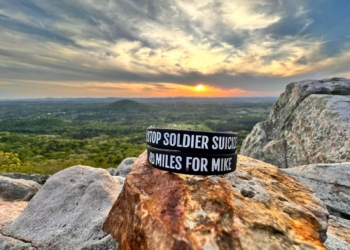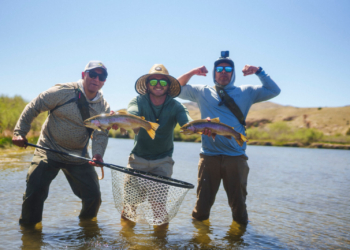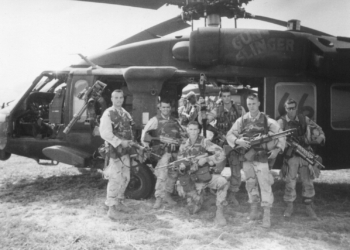When the power at retired soldier Mike Dinesman’s San Antonio, Texas, home began fluctuating late on July 3, he had an uncomfortable intuition: something big was coming. It was indeed, with catastrophic flooding along central Texas’ Guadalupe River area in the early hours of Independence Day. The massive walls of water were enough to take the lives of at least 110 people as of press time, with 170 people still missing.
Dinesman, who served 26 years in Army special forces, infantry and intelligence, knew he would be on the road very quickly in response to the natural disaster. That’s because he is the operations director and chief planning officer at Project DYNAMO, a unique nonprofit that leverages the skills of veterans to rescue Americans in crisis situations around the world.
“I’ve got a bunch of people ready to volunteer, former Green Beret and Ranger guys,” said Dinesman, who arrived at the hardest-hit area on Sunday, July 6. “We’re also prepared to bring in horseback teams, like we did in North Carolina for Helene.”
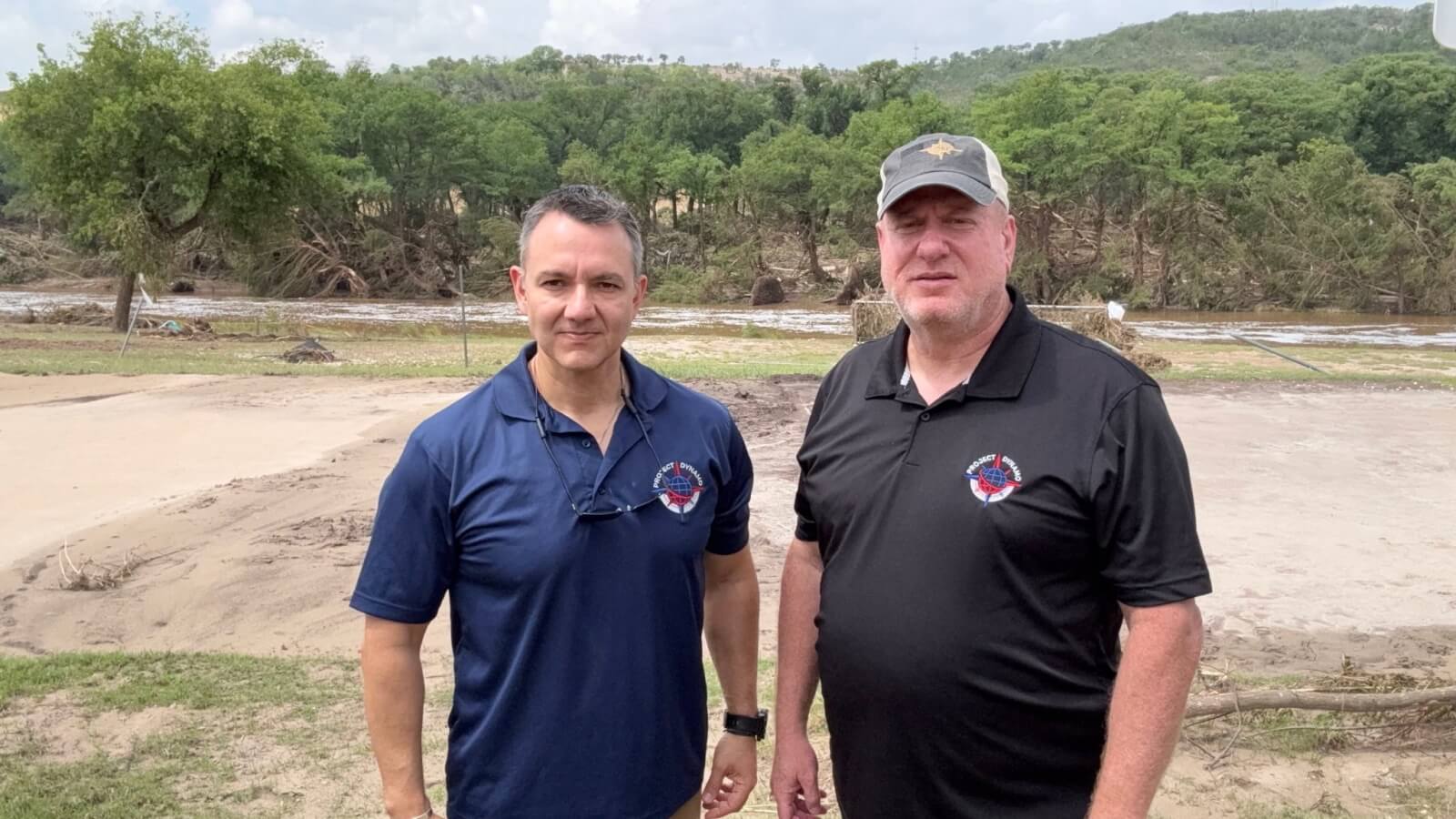
Project DYNAMO began in 2021 in response to the stranded citizens in Afghanistan. Since then, Project DYNAMO volunteers have played a role in rescuing more than 7,000 men, women and children from natural disasters and other crisis situations. They provide rescue and evacuations, case management and family support, and intelligence and logistics via AI, real-time data and deep strategic planning for mission execution.
Dinesman said the river appeared to be receding, though the National Weather Service forecast minor flooding for the rest of the week. A flood warning remains in effect from Wednesday to Friday mornings.
“When you step back, you can see just how high the water flowed out,” Dinesman said. “It just looks like all wilderness, like the road and trails are just gone. A gigantic park with trees, they’re all bent over and look like LEGOs.”
National Guard units from both Texas and other states have responded, especially to hardest-hit Kerr County, with “High profile vehicles to aid stranded motorists, Blackhawk helicopters with hoist capability to assist with flood rescues, [and] Personnel to assist with damage assessments and shelter operations,” according to a press release from Texas Governor Greg Abbott’s office.
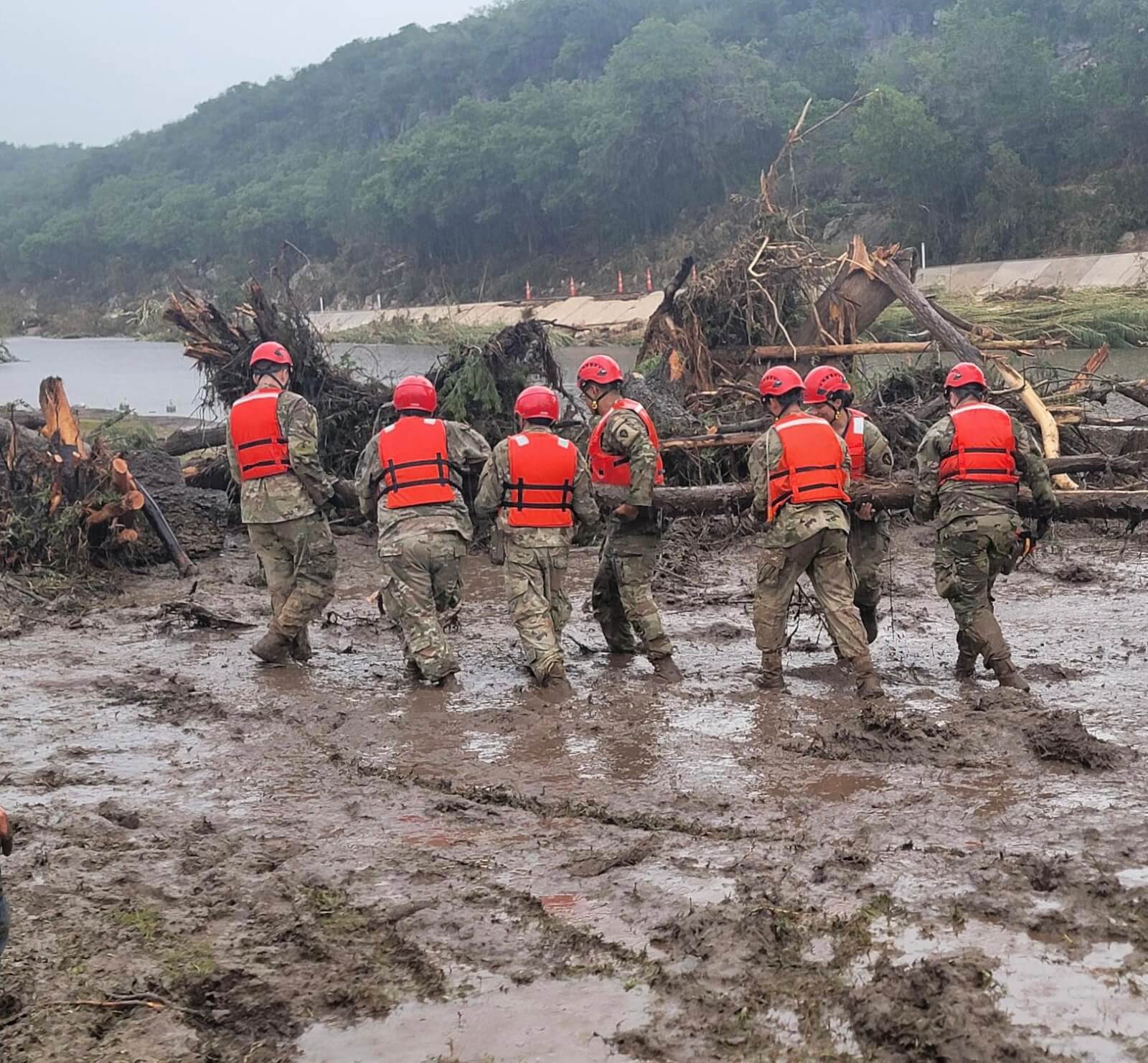
The Coast Guard, meanwhile, also activated, rescuing at least 15 campers from Camp Mystic, the all-girls summer camp in Hunt that lost at least 27 campers and counselors. Coastie Scott Ruskan, a rescue swimmer, saved 165 people alongside his crew during their first mission. “When disaster strikes, they don’t run from the storm,” the White House tweeted on July 7 about Ruskan and his team. “They run into it.”
That has been Dinesman’s experience, too, who has spoken extensively with Texas law enforcement and first responders.
“You can see it in their face — it’s just totally different when it happens like this, because these are their friends and family. This is where they live,” he said. “But in true form of how professionals function, they take a few seconds and then get back to work, because they know people are depending on them.”
Project DYNAMO shifts are unstructured and last as long as necessary, Dinesman said, with volunteers grabbing food, water and sleep when they can. It reminds the team of combat, a time when cooperation, coordination and communication are crucial.
“The unwillingness to quit or give up — that’s what moves us forward,” he said. “And that was trained into me as a very young soldier. The knowledge, skills, ability, training, education and experience from the military all comes together at a time like this for us.”

















